

| This pulpit in the Baptistry is Nicola's earliest authenticated work. (See also his pulpit in the Siena Duomo.) The hexagonal pulpit is divided into three registers: the lower with lions and other figures, with the lions depicted as vanquishing prey--a Romanesque symbol for Christianity triumphing over paganism. The middle level depicts personified Virtues and Prophets, and the upper, has reliefs depicting events in the life of Christ. Classical influences are evident in the style with some of the deeply cut figures traced to Roman sources. | ||

|

|
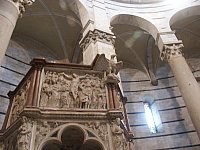
|
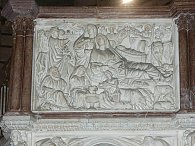
|
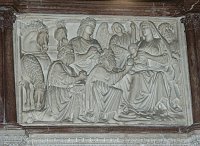
|
The Annunciation and The Nativity; |
The Presentation in the Temple;The last of the five scenes, the Last Judgment is not shown here. (The sixth panel of the hexagon was omitted for the stairwell.) |

|
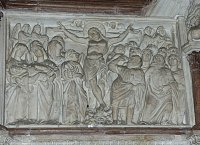
|

|

|
Evangelists and Prophets in the spandrelsJohn with his symbol the eagle and Mark with the lion are depicted in the example on the left, while prophets are represented in the center. |
Left: representation of the classical virtue Fortitude; center: Charity?; right: the eagle of St. John on the lecternThe nearly free-standing statue of Fortitude is considered to be the first modern representation of a classical nude and resembles representations of Hercules holding a club and wearying a lion skin as reminders of his "Labors." Although about half life size, the figure seems monumental and anticipates in pose the later Renaissance development of weight shift (or "contrapposto"). See, for example, Donatello's Saint Mark in a niche at Orsanmichele. | ||
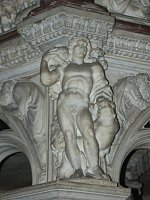
|
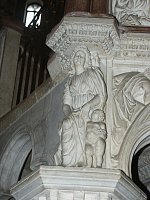
|

|
 Click here to return to index of art historical sites.
Click here to return to index of art historical sites.
 Click here to return to index of artists and architects.
Click here to return to index of artists and architects.
 Click here to return to chronological index.
Click here to return to chronological index.
 Click here to see the home page of Bluffton University.
Click here to see the home page of Bluffton University.
